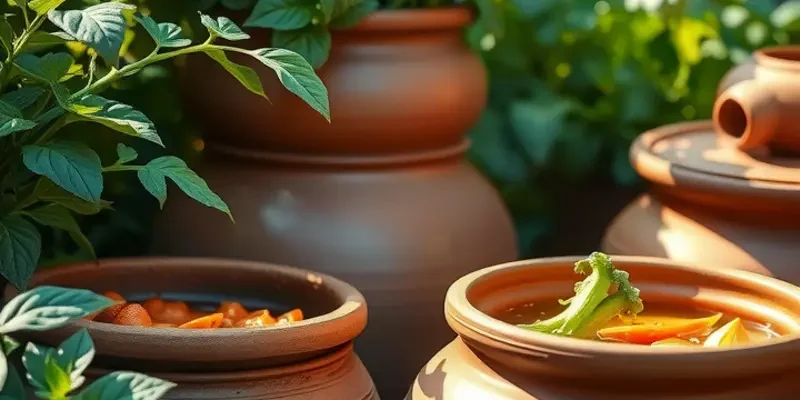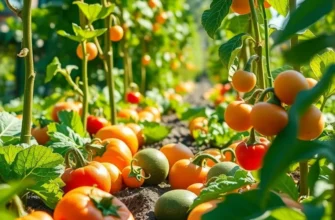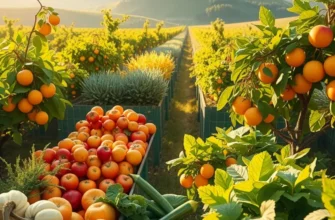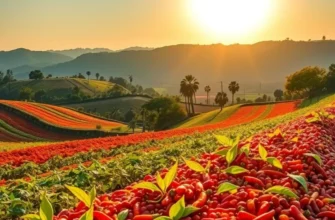Food preservation techniques reflect the rich tapestry of global culinary traditions, ensuring that flavors and nutrients endure through time. From sun-drying fruits under the scorching sun to fermenting vegetables in clay jars, cultures worldwide have developed unique methods to extend the life of their food while enhancing its taste. This exploration invites food enthusiasts and the culturally curious to dive into the fascinating practices that not only safeguard food but also tell stories of heritage, creativity, and adaptability across generations.
The Art of Fermentation: A Global Perspective
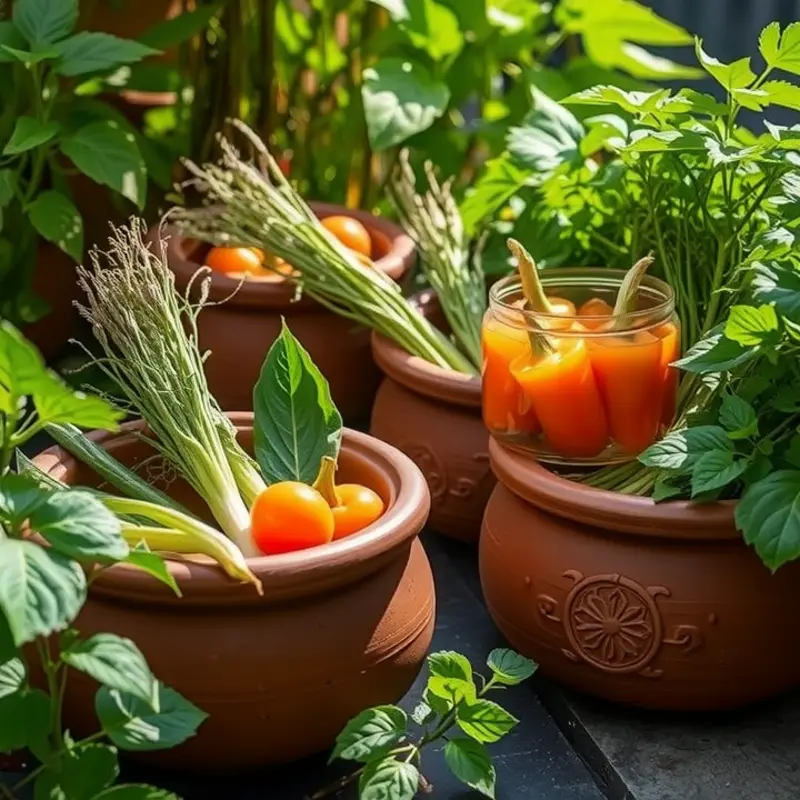
Fermentation is a mystical art, molding humble ingredients into nutrition-rich delicacies through the synergy of microorganisms and time. This ancient method, originating from various corners of the world, offers more than long shelf life; it teems with health benefits and tantalizing flavors.
Korea’s kimchi exemplifies this balance beautifully. Crafted from napa cabbage, radishes, and other vegetables, it is traditionally seasoned with garlic, ginger, chili pepper, and fermented seafood. The result is a dish bursting with umami and a slight tang. Beyond flavor, kimchi teems with probiotics, aiding gut health and boosting immunity. Not only a side dish, it becomes the heart of many Korean meals, illustrating how a preservation method can deeply influence culinary culture.
Moving west to Germany, we encounter sauerkraut. Its straightforward ingredients—cabbage and salt—belie the complex flavor that fermentation yields. The lactic acid bacteria naturally present in cabbage ferment the sugars, resulting in the characteristic tartness of sauerkraut. A staple in German cuisine, it pairs perfectly with sausages and meats, cutting through richness with its acidic punch. Besides enhancing meals, sauerkraut is a powerhouse of vitamin C, having historical importance in preventing scurvy among sailors.
Yet, fermentation is by no means restricted to vegetables. In Japan, miso, a fermented soybean paste, forms the basis of umami-heavy soups and sauces. Miso’s depth of flavor enriches various dishes, contributing both savoriness and nutritional potency, thanks to its high protein content and essential amino acids. Japanese culinary traditions exemplify how fermentation intertwines with daily life, offering both taste and a wealth of nutrition.
Similarly, across the ocean in Latin America, fermented corn beverages like chicha bring together communities in ritual and refreshment. With native roots, these drinks embody the spirit of cultural identity and communal sharing. Each region imparts its unique twist on fermentation traditions, reflecting diverse palates and historical contexts.
The global repertoire of fermented foods demonstrates how ancient techniques continue to resonate. As interest grows in probiotics and gut health, such traditions gain renewed relevance. Exploring various preservation practices can enrich our culinary approaches and enhance our diets in flavorful, natural ways. For those interested in incorporating fermented ingredients with nutritional benefits into modern cooking, discovering functional foods could be a fruitful next step.
In this journey across global fermentation, we see continuity and innovation. Each method and culture brings its distinctive touch, contributing to the rich tapestry of culinary traditions that transcend mere preservation, deeply enriching our palates and our lives.
Preservation by Drying: Sunlight and Air’s Magic
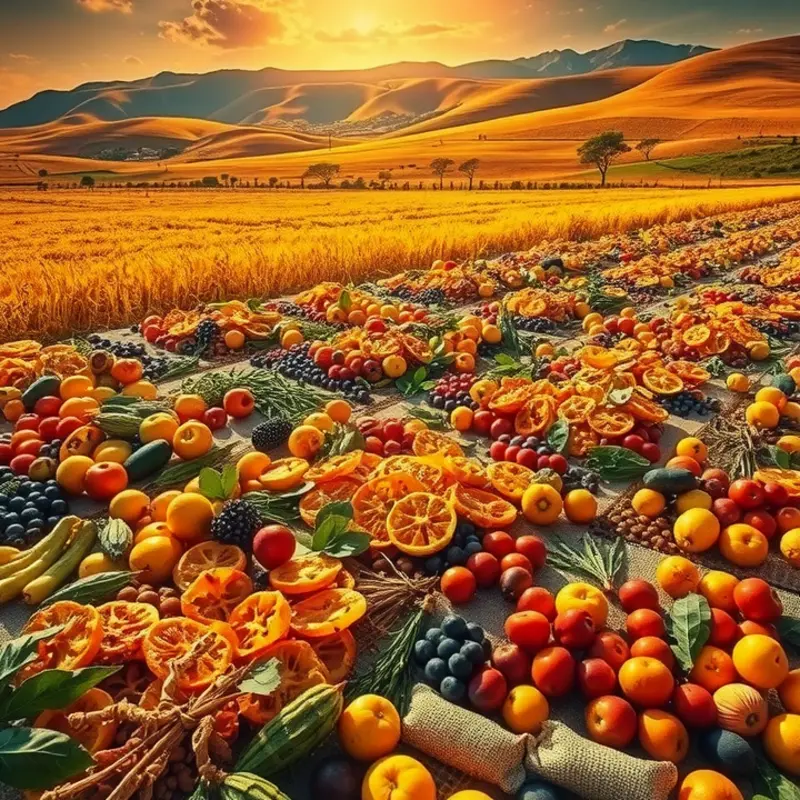
Across the globe, drying has stood the test of time as a reliable food preservation technique. The methods vary widely, yet they all harness the natural elements of sun and air to extend the life of vital foodstuffs.
In the Mediterranean, sun-drying remains a cornerstone technique for preserving fruits and herbs. People spread produce on rooftops or specially built drying racks, ensuring ample sunlight and ventilation. This method enhances the natural flavors and nutrients, allowing for the creation of rich, flavorful ingredients used in Mediterranean cuisine. Sun-dried tomatoes, for example, bring a concentrated burst of sweetness and acidity to any dish. These techniques also play a pivotal role in crafting traditional herb blends, which serve as foundational flavor enhancers across various Mediterranean dishes.
In South Asian cultures, drying serves as an essential way to approach spice preservation. Chili peppers are strung together and hung in bright sunshine to intensify their flavors. Similarly, the aromatic spices such as fenugreek and coriander undergo drying processes that secure their vibrancy and efficacy in adding depth to curries and stews.
Transitioning to East Asia, innovative drying techniques marry tradition with modern technology. In Japan, the concept of ‘hoshigaki,’ or dried persimmons, demonstrates a meticulous approach to drying fruits. Workers gently massage the fruits over several weeks as they hang to dry, resulting in a uniquely sweet and tender delicacy. Freeze-drying, a more contemporary technique developed in Asia, uses a low-temperature dehydration process. This method effectively preserves perishable foods, making it instrumental in satisfying both local tastes and global demands for durable, lightweight food options.
Native American tribes historically employed deliberate use of smoke and sun for drying. Fish, game, and berries were preserved through intricate techniques that have been passed down through generations. Smoke drying added a unique flavor, while sun exposure effectively desiccated the food, preventing microbial growth. This method continues to be honored and practiced, safeguarding traditional culinary heritage.
While each technique carries its distinct regional flair, all aim to retain nutritional value, reduce food spoilage, and enhance flavor. The adaptability and minimal environmental footprint of drying align well with modern concerns about sustainability. As we become more conscious of ecological impacts, these ancient techniques offer valuable lessons for creating eco-smart kitchen practices. For more insights on sustainable storage methods, explore this resource.
From sun-drenched rooftops in Southern Europe to the frost-bitten plains of Japan, the art of drying forms a tapestry of global preservation cultures. Each thread represents a distinct method, yet all are unified by a common purpose: extending the life and enriching the flavors of our cherished foods.
Final words
The techniques of food preservation are a window into the culinary heritages of diverse cultures around the globe. Each method not only ensures the longevity of food but also carries flavors that resonate with the history and environment from which they originate. Whether through fermentation, drying, or other methods, the essence of food preservation lies in the art of enhancement and respect for the ingredients. As food enthusiasts and culturally curious readers, we can appreciate these global practices and perhaps even incorporate them into our own kitchens, celebrating a culinary legacy that transcends borders and connects us all.

